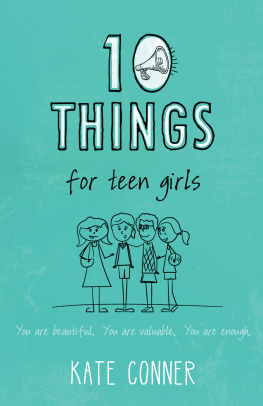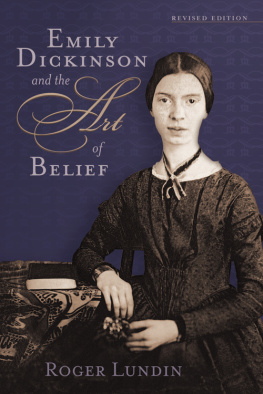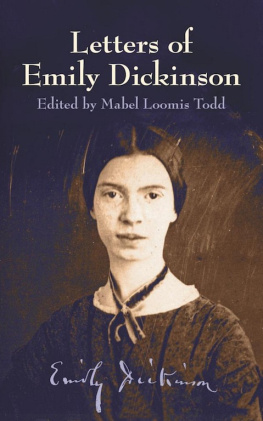FOREWORD
Table of Contents
The loyalty of Pocahontas, the patriotism of Molly Pitcher and Dorothy Quincy, the devoted service of Clara Barton, the heroism of Ida Lewis, the enthusiasm of Anna Dickinson, the fine work of Louisa Alcottall challenge the emulation of American girls of to-day. Citizen-soldiers on a field of service as wide as the world, young America has at this hour of national crisis its chance to win recognition for fidelity, for bravery, and for loyal service, with victory for American ideals as its golden reward, in a world "made safe for democracy."
My first aim in bringing the lives of these ten American girls from history to the attention of the girls of to-day has been to inspire them to like deeds of patriotism and courage. Second only to that purpose is a desire to make young Americans realize as they read these true stories of achievement along such widely varying lines of work, that history is more thrilling than fiction, and that if they will turn from these short sketches to the longer biographies from which the facts of these stories have been taken, they will find interesting and absorbing reading.
May the book accomplish its twofold object, and so justify its publication at this time of the testing of all true Americans.
Kate Dickinson Sweetser.
August 1, 1917.
POCAHONTAS: THE INDIAN GIRL OF THE VIRGINIA FOREST
Table of Contents
Sunlight glinting between huge forest trees, and blue skies over-arching the Indian village of Werewocomoco on the York River in Virginia, where Powhatan, the mighty "Werowance," or ruler over thirty tribes, was living.
Through Orapakes and Pamunkey and other forest settlements a long line of fierce warriors were marching Indian file, on their way to Werewocomoco, leading a captive white man to Powhatan for inspection and for sentence. As the warriors passed into the Indian village, they encountered crowds of dusky braves and tattooed squaws hurrying along the wood trails, and when they halted at the central clearing of the village, the crowd closed in around them to get a better view of the captive. At the same time there rose a wild clamor from the rear of the throng as a merry group of shrieking, shouting girls and boys darted forward, jostling their way through the crowd.
Their leader was a slender, straight young girl with laughing eyes such as are seldom seen among Indians, and hair as black as a crow's wing blown about her cheeks in wild disorder, while her manner was that of a happy hearty forest maiden. This was Matoaka, daughter of the Werowance Powhatan, and although he had many subjects as well as twenty sons and eleven daughters, not one was ruled so despotically as was he himself, by this slender girl with laughing eyes, for whom his pet name was Pocahontas, or in free translation, "little romp."
Having established themselves in the front row of the crowd the girls and boys stood eagerly staring at the prisoner, for many of them had never seen a white man before, and as Pocahontas watched, she looked like a forest flower in her robe of soft deer-skin, with beaded moccasins on her shapely feet, coral bracelets and anklets vying with the color in her dark cheeks, while a white plume drooping over her disordered hair proclaimed her to be the daughter of a great chief. In her health and happiness she radiated a charm which made her easily the ruling spirit among her mates, and compelled the gaze of the captive, whose eyes, looking about for some friendly face among the savage throng, fastened on the eager little maiden with a feeling of relief, for her bright glance showed such interest in the prisoner and such sympathy with him as was to endear her to his race in later years.
The long line of braves with their heads and shoulders gaily painted had wound their slow way through forest, field, and meadow to bring into the presence of the great "Werowance" a no less important captive than Captain John Smith, leader in the English Colony at Jamestown by reason of his quick wit and stout heart. The settlers having been threatened with a famine, the brave Captain had volunteered to go on an expedition among neighboring Indian villages in search of a supply of corn. The trip had been full of thrilling adventures for him, and had ended disastrously in his being taken prisoner by Opechancanough, the brother of Powhatan. The news of Smith's capture having been carried to the great Werowance, he commanded that the pale-faced Caucarouse, or Captain, be brought to him for sentence. And that was why the warriors marched into Werewocomoco, Opechancanough in the center, with the firearms taken from Captain Smith and his companions carried before him as trophies. The prisoner followed, gripped by three stalwart Indians, while six others acted as flank guards to prevent his escape, and as they passed into Werewocomoco they were greeted by yelling savages brandishing weapons and surging forward to get a better glimpse of the white captive. The procession halted for a few minutes at the village clearing, then moved slowly on to Powhatan's "Chief Place of Council," a long arbor-like structure where the great Werowance was waiting to receive Captain Smith.
The crowd of boys and girls followed in the wake of the warriors until the Council Hall was reached, when they all dropped back except their leader. Pushing her hair from her low brow, that she might see more clearly, and walking with the erectness of a Werowance's daughter, Pocahontas entered the hall and stood near her father where she could not only watch the white captive, who appealed strongly to her fancy, but could also note Powhatan's expression as he passed judgment on the prisoner.
With inscrutable reserve and majestic dignity the great ruler bowed as the captive was led before his rustic throne, where he reclined in a gorgeous robe of raccoon-skins. On either side of the Council Hall sat rows of dusky men and women, with their heads and shoulders painted red, some of the women wearing garments trimmed with the white down from birds' breasts, while others wore long chains of white beads about their necks.
It was a picturesque sight for English eyes, and fearful though he was of foul play, the Captain could not but appreciate the brilliant mingling of gay colors and dark faces. As he stood before the Chief, there was a clapping of hands to call an Indian woman, the Queen of the Appamattock, who brought water to wash the captive's hands, while another brought a bunch of feathers to dry them on. "What next?" Captain Smith wondered as he watched further preparations being made, evidently for a feast, of which he was soon asked to partake.
Under the circumstances his appetite was not keen, but he felt obliged to pretend to a relish that he did not feel, and while he was eating his eyes lighted up with pleasure as he saw by her father's sidethough he did not know then of the relationshipthe little Indian girl whose interest in him had been so apparent when he saw her in the village. He dared not smile in response to her vivid glance, but his gaze lingered long on the vision of youth and loveliness, and he turned back to his meal with a better appetite.













